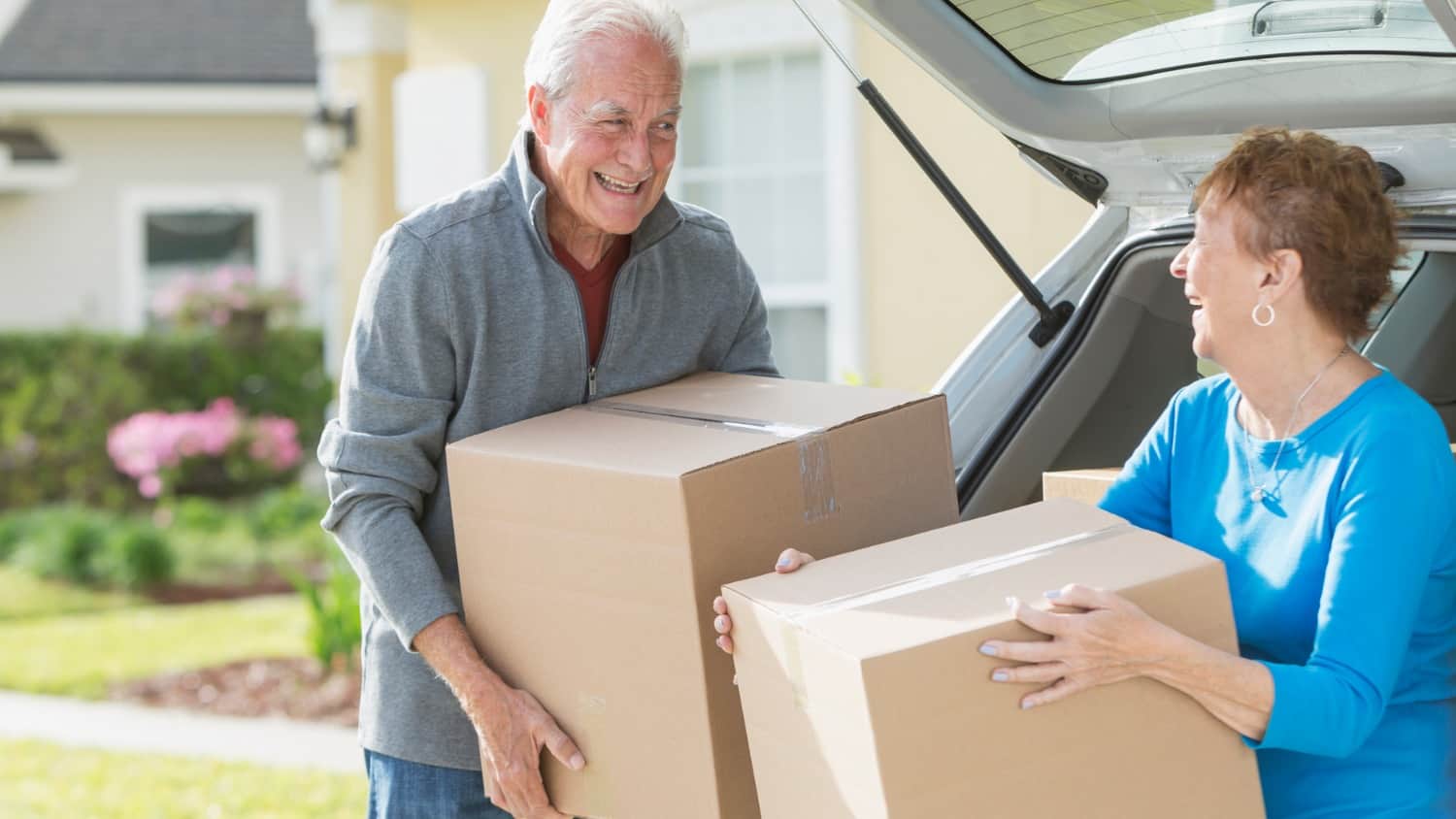
Moving to a New Home Later in Life: Adjusting to Your New Home
Throughout the prior installments of this Sixty and Me blog series, I’ve covered the many facets of deciding to move to a new home later in life and how to prepare. Once you’ve moved, how do you adjust to your new living quarters and community?
All Those Boxes
If you followed the tips in the blog on preparing for your move, unpacking should be straightforward.
One of the first things to do is set up your bed and some tables and chairs so you can rest during the process. Next, unpack some of your favorite things to help you feel like this is your place. It could be a favorite picture or a special item that signifies you are at home.
Basic Arrival Chores
Take these practical steps to avoid headaches down the road.
Are the Smoke Alarms and Carbon Monoxide Detectors Working?
Replace batteries or entire units if necessary.
Are There Repair or Maintenance Issues?
Before unloading anything, walk through your new living space to spot anything that needs fixing or clean-up. If renting, alert the landlord. If you are the owner, make this your “to-do” list to keep your new home in top-notch shape.
Tell the State You’re Here
Moving across state lines? You may need to file a document called “Declaration of Domicile” to let the state know you’re a new resident ready to pay taxes. Check on the specific rules about declaring residency in your new state.
Register to Vote
It’s easy to forget this detail, so spare yourself problems on election day by registering as soon as possible. Also, look up the state and local government representatives who cover your area.
Where Are the City and County Offices?
Knowing where to find City Hall, the county service center, the police department, and the closest fire station can speed up getting help from the local government if needed.
Change Your Driver’s License
You may be able to use your old license legally for a while, but having a picture ID with your new address can help avoid many hassles. You may also need to register your vehicles in your new location. Check local rules concerning this to avoid future problems with law enforcement.
Get Out and Explore
It’s time to learn about your new community. Do a Google search on “stores near me” to compile a list of local businesses. Also, look for interesting destinations like coffee shops, cafes, restaurants, bars, gyms, museums, theaters, and community centers.
You’ll also want to know where to find the post office, parks, trails, libraries and recycling centers. For churchgoers, look for congregations in the area to find service times.
Making Connections
If your move has taken you away from your friends, it’s time to make new personal connections. Here are some tips for developing a new social network.
What’s Your Mindset?
If you’re an extrovert, making new friends might be easier. For many of us, however, getting out of our comfort zone takes more effort. Maintain a positive attitude and remind yourself that making friends takes time. Challenge yourself to take some social risks. It might be a slow process, and not everyone you contact wants to make a connection. Don’t take it personally and keep trying. Eventually, you’ll start to develop some satisfying social connections.
Your Peer Group
Connecting with people your age often is the easiest way to make friends. Moving into 55+ communities has this component built in. If you’re in an environment for all ages, look for local activities and venues with people closer to your age.
Neighbors
Neighbors are often curious about newcomers. Take advantage of this curiosity by reaching out to introduce yourself. It takes no time at all, and you can provide a note with your name and address so it’s easier for both parties to follow up.
Don’t Forget Old Friends
It’s a breeze to keep in touch with your existing friends via telephone and social media. Keeping in touch with your existing connections can help before your new social networks develop.
Use Social Media
Social media can help connect to people in your new community. Sites like Facebook Groups or meetup.com can help you find people with similar interests.
Sign Up
Enrolling in classes or workshops is a terrific way to meet people with common interests. Also, volunteering in the community at schools, churches, homeless shelters, food pantries, political parties, or city projects is a way to connect with like-minded people.
Successfully moving to a new location later in life involves a lot of forethought and planning. Taking logical steps throughout the process can help reduce stress in a time of many changes. Other stress-reducing tips are to be patient and expect ups and downs. Maintaining this mental and emotional flexibility will go a long way toward making your move go smoothly.
Let’s Have a Conversation:
What was the first box you unpacked after your most recent move? How did your life start in your new home and town? Which services and local shops did you look for first?
Tags Downsizing Your Life







Anybody have any place recommendations for a single childless (not by choice) woman who moved many many times in childhood and adulthood so isn’t “from” anywhere. I loved Cali but can’t afford to live anywhere close to civilization. Thanks.